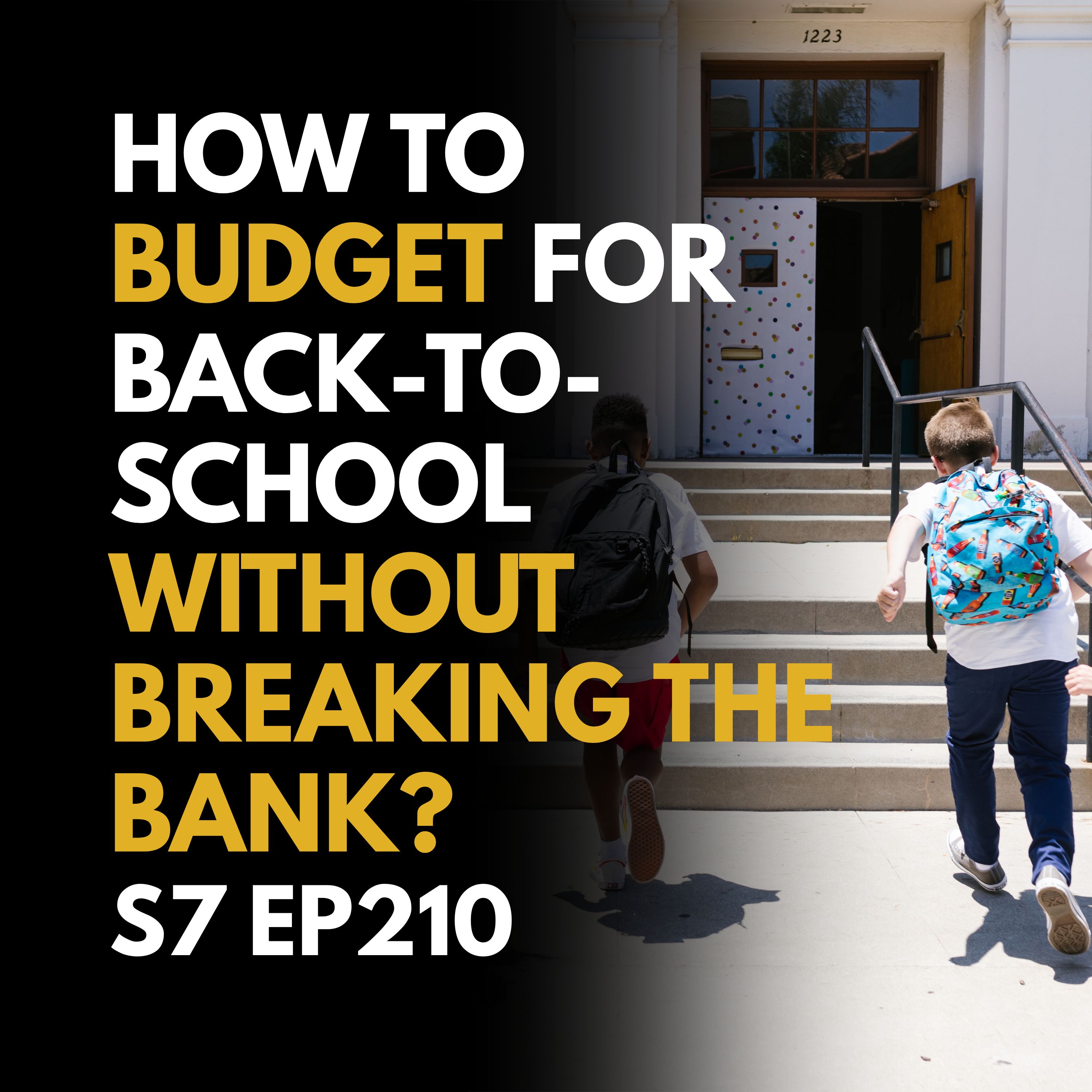Is There a Way to Balance Back-to-School Purchases?

Introduction: How to Budget for Back-to-School Without Breaking the Bank
Back-to-school season brings both anticipation and financial strain. With the average household spending close to $900 for K-12 students as of 2023, the pressure is real. Many parents face these rising costs amid inflation, with some even needing second jobs. Yet financial confidence doesn’t come from wealth—it flows from wise stewardship, planning, and contentment. Is There a Way to Balance Back-to-School Purchases?
Understanding the Back-to-School Financial Landscape
School expenses today go far beyond pencils and notebooks. Technology now leads as the largest expense category, with 25% of parents expecting to spend over $500 on tech. Clothing and shoes remain significant costs, with $202 and $118 average spends respectively.
Hidden costs include:
-
Childcare ($112 avg.)
-
School lunches ($111)
-
Transportation ($70)
-
Extracurriculars, tutoring, and field trips
-
Mid-year supply replenishment
-
Classroom contributions
-
SAT fees and graduation costs
Back-to-school spending is no longer a one-time event—it spans the year, making it essential to plan with long-term vision.
Table: Average 2023 Spending by Category
| Category | Avg. Spend | % of Total |
|---|---|---|
| Clothing (excl. shoes) | $202 | 23% |
| Electronics | $161 | 18% |
| Shoes | $118 | 13% |
| Childcare | $112 | 13% |
| School lunches | $111 | 12% |
| Supplies | $77 | 9% |
| Transportation | $70 | 8% |
| Backpack | $45 | 5% |
| Total | $895 | 100% |
Building a Budget: The Foundation of Financial Peace
Creating a tailored budget curbs impulse spending and promotes stewardship. Key steps:
-
Assess Inventory: Reuse what you already have—backpacks, binders, gently used clothing.
-
Get the Official List: Use it as your shopping blueprint.
-
List All Costs: Include clothing, tech, lunches, transportation, mid-year supplies.
-
Estimate Costs + Add Buffer: Slightly overestimate to allow flexibility.
-
Set a Firm Limit: Base this on disposable income, not gross.
-
Use Sinking Funds: Save a small amount monthly for expected but non-regular costs.
-
Automate Savings: Set recurring transfers to savings accounts.
-
Review Monthly: A budget is a living tool—adjust as needed.
Avoiding Common Pitfalls
-
Not Tracking Spending: Even small purchases add up.
-
Overly Restrictive Budgets: Be realistic; leave room for breathing.
-
Wants Before Needs: Prioritize essentials.
-
Last-Minute Shopping: Leads to inflated prices.
-
Credit Card Overuse: Avoid debt traps, especially with “Buy Now, Pay Later” plans.
Smart Shopping Strategies
1. Shop Strategically:
-
Start early—many sales begin mid-July.
-
Utilize sales tax holidays.
-
Compare prices across platforms using apps like Rakuten, Shopzilla, or Google Shopping.
2. Use Coupons & Cashback:
-
Use tools like Ibotta, Honey, or store emails.
-
Bulk buying at Costco or Sam’s can reduce per-unit cost.
3. Smart Product Choices:
-
Reuse existing supplies.
-
Buy quality over trendy (e.g., Crayola over generic).
-
Thrift or swap for clothing.
-
Stagger purchases by season.
4. Textbook Hacks (for college/high school):
-
Wait to confirm required books.
-
Buy used, rent, or get e-books.
-
Use platforms like Amazon, Chegg, ThriftBooks, OpenStax.
-
Share with classmates.
5. Tech Savings:
-
Buy certified refurbished from Amazon or Plug.tech.
-
Ask about school-issued devices.
-
Watch for major retailer deals.
Student & Teacher Discounts
Use platforms like ID.me and SheerID to unlock discounts from brands like Samsung, Crocs, and Verizon. Always ask retailers about available student/teacher discounts.
Back-to-School Savings Checklist
| Strategy Category | Specific Action | Benefit |
|---|---|---|
| Planning | Inventory supplies, get lists, use budget | Avoids duplication and stress |
| Smart Shopping | Use tax holidays, compare, use coupons | Maximizes discounts |
| Tech & Textbooks | Buy refurbished, rent, wait on books | Huge savings on big-ticket items |
| Clothing & Supplies | Reuse, thrift, delay non-essentials | Reduces spending, increases flexibility |
| Financial Tools | Use sinking funds, automate savings | Builds resilience and preparedness |
| Community Resources | Seek local drives or discounts | Alleviates strain for tight budgets |
Teaching Financial Stewardship: Involving Children
Money habits begin young. Use this season to teach:
-
Budgeting & Decision-Making: Give kids a budget to manage school shopping.
-
Needs vs. Wants: Use real purchases to distinguish between essentials and desires.
-
Delayed Gratification: Save for big items rather than impulse-buy.
-
Comparison Shopping: Let kids help hunt for the best deals.
-
Opportunity Cost: Explain trade-offs (e.g., "this vs. that").
-
Track Spending Together: Use simple visuals or apps.
-
Generosity & Gratitude: Encourage giving from their own budget.
These real-world lessons instill biblical stewardship values like contentment, diligence, and generosity.
Navigating Unexpected Costs & Community Support
Even great plans encounter surprise costs. Prepare by:
-
Contingency Funds: Set aside a modest amount for last-minute needs.
-
"School Extras" Fund: Save monthly ($20–$50) for ongoing costs like field trips and mid-year restocks.
Community Resources:
-
Nonprofits: Kids In Need Foundation, Back 2 School America
-
Local Drives: Churches, schools, and libraries may offer assistance.
-
College Financial Aid: FAFSA unlocks grants, scholarships, and student loans.
Financial confidence also means knowing when to seek help—and being willing to offer it when able.
Conclusion: Stewardship, Strategy, and Peace
Back-to-school doesn’t need to mean financial anxiety. With strategic planning, community awareness, and faithful stewardship, families can walk confidently into the school year.
Key Takeaways:
-
Budget comprehensively: Think long-term, not just August.
-
Be a savvy shopper: Early, informed, and strategic spending saves big.
-
Teach through action: Involve your kids in every step.
-
Plan for surprises: Build a cushion before the need arises.
-
Give generously: Support others as the Lord has provided for you.
By approaching this season with preparation and trust in God's provision, families can cultivate peace, reduce debt, and model Kingdom stewardship that honors both their finances and their faith.













